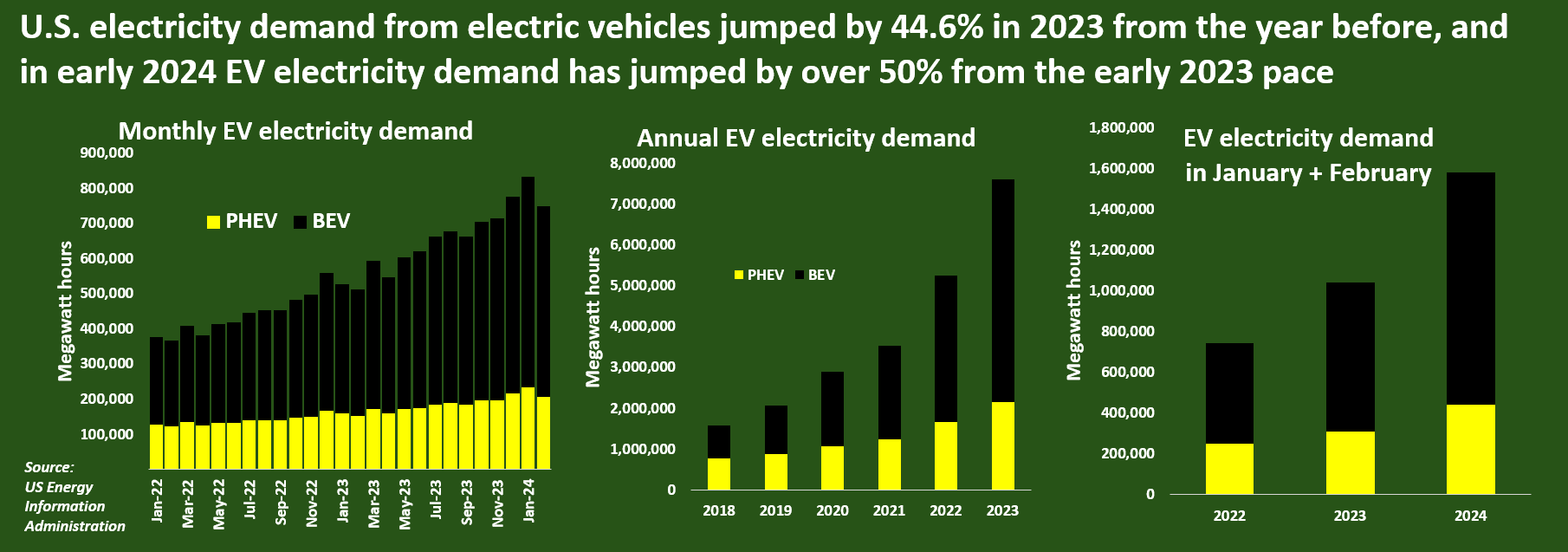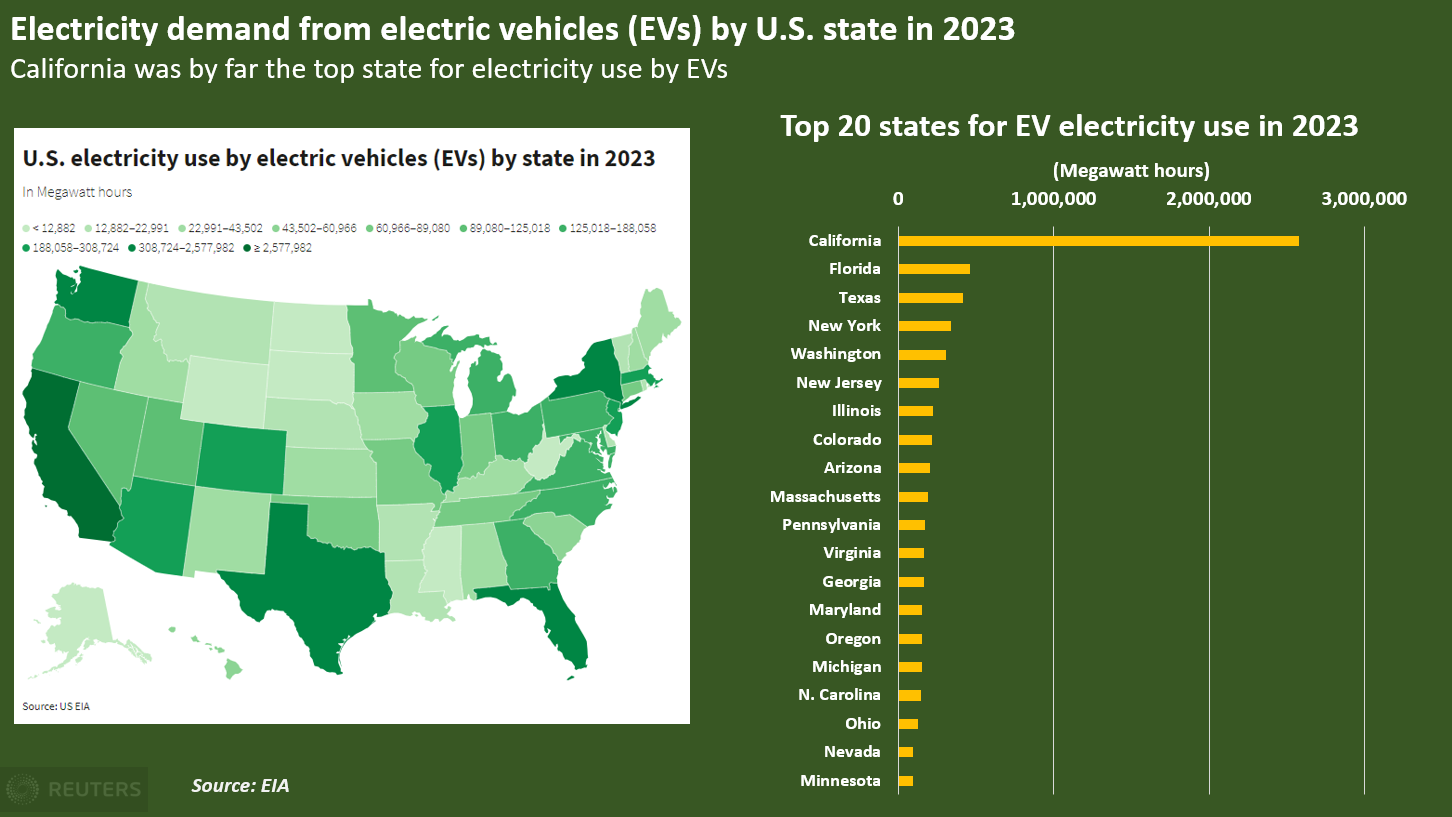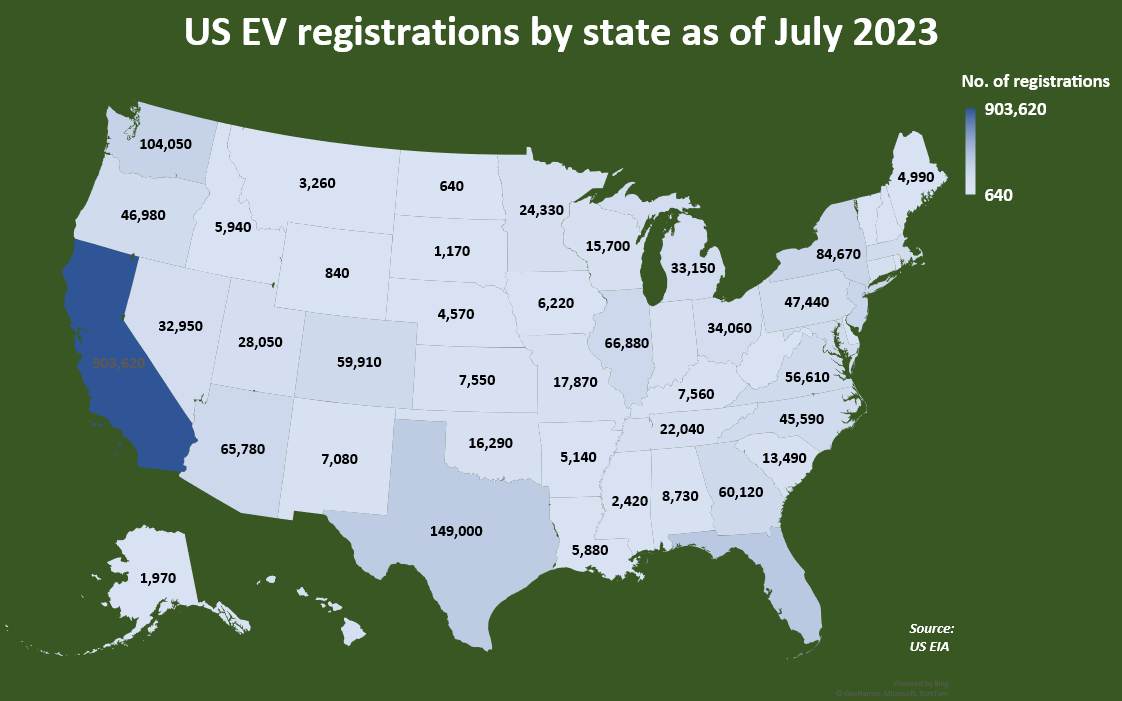
Total electricity use by EVs through February 2024 was 1.58 million megawatt hours (MWh), compared with 1.04 million MWh during the same period in 2023, according to the U.S. Energy Information Administration (EIA).
That 52% rise in EV electricity use from early 2023 exceeded the 40% growth rate posted in 2023 from January-February 2022, and indicates that the impact from rapidly expanding EV sales continues to increase in electricity markets.

U.S. electricity demand from electric vehicles jumped by 44.6% in 2023 from the year before, and in early 2024 EV electricity demand has jumped by over 50% from the early 2023 pace
EVs accounted for 16% of all light-duty vehicle sales in the U.S. in 2023, when collective electricity use by EVs overtook electricity demand by U.S. railways for the first time, according to the EIA's latest Electric Power Monthly report.
ANNUAL TRENDS
Total electricity consumption by EVs in 2023 was 7.6 million MWh, up 45% from 2022's total.
The growth lagged the record 49.2% growth in EV electricity demand posted in 2022, but was the second largest annual growth rate on record and brings the five-year average annual growth rate for EV electricity demand to 37.2%.
The top state for EV electricity consumption was California, the most populous U.S. state, where EV's consumed 2.58 million MWh of electricity and accounted for just under 34% of total national EV electricity demand.
That share was down from 35.2% in 2022, indicating that EV electricity demand grew faster in other states last year.
Florida (458,767 MWh), Texas (417,027 MWh), New York (337,367 MWh) and Washington (308,724 MWh) round out the top five states for EV electricity demand in 2023.
In terms of vehicle type, battery electric vehicles accounted for nearly 72% of total EV electricity use, while plug-in hybrids accounted for 28.3%.
STATE STANDOUTS
Beyond the top five electricity-consuming states for EVs, 13 other states consumed 100,000 MWh or more electricity for EV charging in 2023.

Electricity demand from electric vehicles (EVs) by U.S. state in 2023
These states cover a wide geographic span from Maryland to Illinois and from North Carolina to New Jersey, and indicate rapid uptake of EVs in car fleets throughout the country.
The state with the largest year-on-year growth in electricity demand for EV charging was Oklahoma, which posted a 74% expansion in EV electricity use last year, to 73,058 MWh.
A rapid expansion in the installation of public chargers, plus local government incentives for home-based charging equipment, helped accelerate EV uptake in Oklahoma.
The states with the lowest electricity demand for EVs last year were North Dakota, Wyoming and South Dakota, which have the lowest per capita ownership rates of EVs in the country, according to the U.S. Department of Energy.

US EV registrations by state as of July 2023
Limited public charging infrastructure and concerns about the impact of harsh winter weather on battery life are some of the factors keeping EV growth in check in those states.
However, more charging stations are planned throughout the U.S. in 2024 and beyond, while EVs with battery ranges of 300 miles or more are becoming common in manufacturer offerings.
In addition, EV prices are under pressure due to high dealer inventories, so the U.S. car fleet looks set to become increasingly electrified going forward.
That in turn will fuel even greater demand for electricity at home and from public charging ports, and may place additional strain on utilities to ensure round-the-clock electricity availability.